Very few people would willingly walk 200 miles across the state, let alone hatch the idea. But Doug Foote, firefighter at Excelsior Fire District, is that person. In 2021, Foote pulled together the first Miles for MnFIRE event, walking from Marietta to St. Paul to raise awareness about firefighter health and wellness and helping raise $20,000 for the Minnesota Firefighter Initiative (MnFIRE) along the way. Now, the Excelsior Fire District firefighter is back again to walk 150 miles from Duluth to St. Paul, from Saturday, Sept. 13 to Sunday, Sept. 21.
While the Miles for MnFIRE route has changed, the motivation remains the same: to shine a spotlight on this important issue and MnFIRE’s efforts to improve firefighter health outcomes. Before hitting the road with fellow firefighter Kyle Bode of the St. Paul Fire Department, we asked Foote a few questions about what inspires him and what he is doing differently this time:
What inspired you to embark on this 150-mile walk?
Firefighters are suffering and dying at alarming rates from cardiac, cancer and mental health issues. I personally have served and know several who have suffered, and sadly, perished. MnFIRE has done so much for all of us in the fire service. I’m hoping to gain further awareness and funds for their incredible cause.
What are you most looking forward to as Miles for MnFIRE approaches?
Easy question: inspiring and deep discussions with fellow firefighters along the route, like I enjoyed last time. I asked many firefighters walking with me, “is there anything you can’t unsee?” This simple question led to some truly thoughtful discussions, some of them tearful, some heart-wrenching and all of them therapeutic. Several people thanked me for simply listening to things they weren’t able to share with anyone else. The walk is free of technology distractions with nothing to do but talk or walk in silence in a shared experience for miles. I’ll take that with me for the rest of my life.
Why is supporting MnFIRE so important?
Minnesota ranks as one of the highest states for volunteer firefighters. MnFIRE has saved lives when no one else has stepped up. MnFIRE provides benefits during hardship. If I can do one small thing to help MnFIRE and my fellow fire service brothers and sisters, I’m going to do it. It’s an honor.
How do people react when you tell them you are walking 150+ miles to raise awareness for firefighter health and wellness?
Pretty much the same as last time: people think I’m nuts. When I mention the last walk that we did four years ago, what it accomplished and all that MnFIRE does, they are always supportive, generous and inspired.
How have you prepared for this journey, mentally and physically?
I’ll be honest, it’s a mental grind. I’m training in parallel for this and the 110 flight 9/11 climb at the same time, both of which require mental and physical grit. The walk prep is a large time commitment. I’m walking 18 miles on weekend days, which is about six hours each time with short breaks. I will have walked over 100 miles in advance of the walk. Of course, none of this would be possible without my wife, Denise, who is my pit crew and source of encouragement and strength. She’s there at every break with food, change of clothes and shoes, and other supplies. She’s sacrificing a lot of time to support me, and I couldn’t do it without her!
You’ve done this athletic feat before. Anything you are doing differently this time?
During the last walk in 2021 from Marietta to St. Paul, I averaged 30 miles per day, which took its toll on my body. This go-around, we’re averaging approximately 18 miles per day and plan to spend a little more time at stops along the way. It will take us more days but be more enjoyable, and give us a chance to connect with more people and some flexibility to accommodate for bad weather.
What do you hope people take away from watching your Miles for MnFIRE journey?
First and foremost, I hope, like the last walk, that firefighters have a greater awareness of the benefits offered by MnFIRE. Last time the walk inspired several fire service members to step forward and ask for help. I also hope our broader community gains a better understanding of the health risks impacting firefighters and how important MnFIRE is to those who truly need their benefits. MnFIRE is such a blessing for all of us!
To show your support for the walkers, MnFIRE and all who bravely serve in Minnesota’s fire service, consider making a donation or sponsoring Miles for MnFIRE. Thanks to a generous anonymous donor, all Miles for MnFIRE donations up to $10,000 will be matched dollar for dollar until Sept. 21. Plus, any individual donating $200 or more can receive a Miles for MnFIRE hat!
If you are interested in cheering on the walkers, we’ll be posting more information on the route and daily updates on our website.

